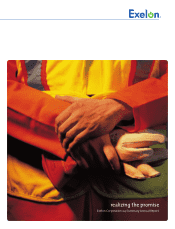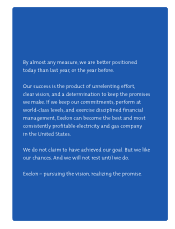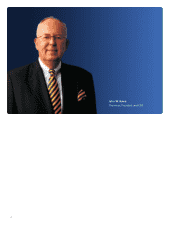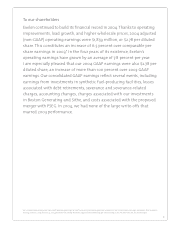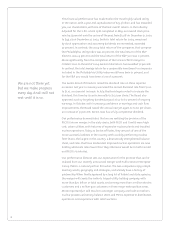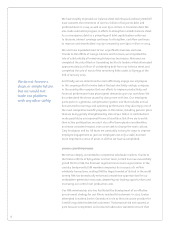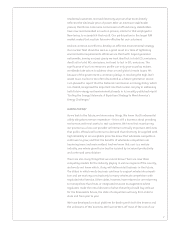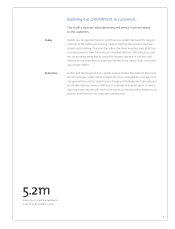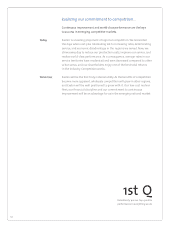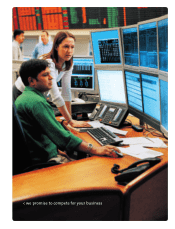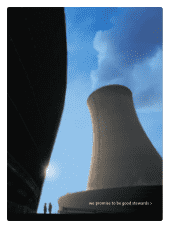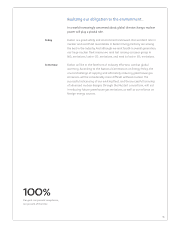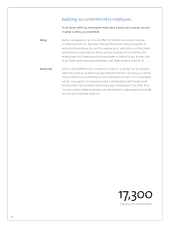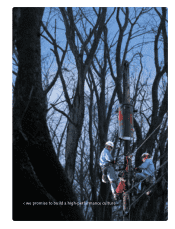ComEd 2004 Annual Report Download - page 9
Download and view the complete annual report
Please find page 9 of the 2004 ComEd annual report below. You can navigate through the pages in the report by either clicking on the pages listed below, or by using the keyword search tool below to find specific information within the annual report.
7
residential customers received electricity at prices that more directly
reflected the wholesale price of power. After an extensive stakeholder
process, the Illinois Commerce Commission staff and many stakeholders
have now recommended an auction process, similar to that employed in
New Jersey, to accomplish that result. Our participation in the larger PJM
market makes that auction far more effective for our customers.
And we continue our effort to develop an effective environmental strategy.
Our nuclear fleet should be seen as a great asset in a time of tightening
environmental requirements. While we are the fourth largest generator
nationwide, among our peer group we rank dead last in total CO2emissions,
dead last in total NOXemissions, and next to last in SO2emissions. The
significance of our low emissions profile can only grow as policy makers
worldwide take action to address clean air and global climate issues. Yet
because of the government’s continuing delays in resolving the high-level
waste issue, nuclear is too often discounted as a future generation source.
I am pleased to reportthat the National Commission on Energy Policy, which
I co-chaired, recognized the important role that nuclear can play in addressing
both future energy and environmental needs in its recently published report
“Ending the Energy Stalemate: A Bipartisan Strategy to Meet America’s
Energy Challenges.”
leading the way
As we look to the future, we know many things. We know that fundamental
utility obligations remain imperative – this is still a business about providing
real service, with real assets, to real customers. We know that maintaining
our position as a low-cost provider will remain critically important. We know
thatpublic officials will continue to demand that electricity be supplied with
high reliability at an acceptable price. We know that wholesale competition
continues to grow, and that the benefits of wholesale competition are
becoming more and more evident. And we know that ours is a mature
industry, one where growth can best be assured by increased productivity
and continued consolidation.
There are also many things that we cannot know. There are now three
competing models for the industry playing in various regions of the country,
and we do not know which, if any, will define retail business in the future.
The states in which we do business continue to support wholesale competi-
tion and are working constructively to marry wholesale competition with
regulated retail service. Other states, however, have retained or are returning
to monopolistic franchises, or integrated resource management, where
regulators make the initial decision of what the utility should buy. At least
for the foreseeable future, the state of competition will vary from state to
state and from year to year.
We have developed a robust platform for dealing with both the knowns and
the unknowns of this business. We have written-off most of the cost of our

